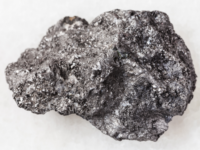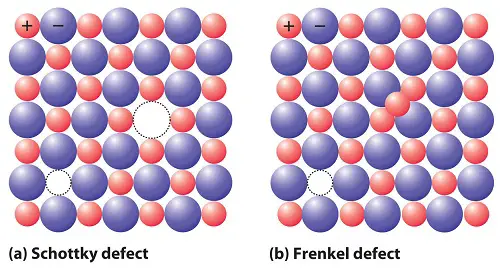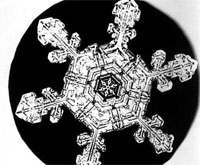These two adjectives are used in different fields and their meanings might vary. However, the basic concept between the two is independent and similar based on their original use. Isotropy and anisotropy often describe the properties of materials and minerals. For instance, crystals may be isotropic or anisotropic based on their sizes. A single crystal can be anisotropic whereas a group of crystals can be isotropic.
In the descriptions of isotropic and anisotropic, there is an element of direction on both these terms. Based on the alignment of the atoms in a crystal, for example, it is possible to classify the materials into isotropic and anisotropic materials. The major difference between these two classes of materials is that isotropic materials have similar properties in all directions. On the other hand, the properties of anisotropic materials are dependent on the direction.
Looking at the word structure, isotropic is the root word in anisotropic. The prefix “an” is an indication of the contrast in the use and meaning of the base word. The root word, isotropic in the literal sense means equal direction. Breaking down the word from its Greek origins, “Iso” means equal, whereas “tropic” means direction. Furthermore, it is possible to use both words as either nouns or adjectives. You can also use them as parts of speech like adverbs.
What makes Isotropic different from Anisotropic?
As an adjective on its own, anything that is isotropic is of equal physical properties along all directions. As mentioned above, the definition may vary depending on the area of usage. For instance, when referring to the isotropy of a mineral or material, this means that it has similar properties in all directions. These properties may be physical, mechanical, thermal, or electrical properties.
Whereas, if an industrial process is isotropic, this refers to the uniformity of the rates in the different phases despite the direction. On the contrary, Anisotropic is the antonym for isotropic. It refers to material properties that are dependent on direction. Additionally, any material displaying differing properties in the different directions is anisotropic. For such materials, the physical properties of the material are different along the different axes of direction. Properties that vary in direction may include physical and mechanical such as tensile strength, conductivity, or absorbance.
Therefore, materials and minerals that are isotropic have similar properties in all directions. They are independent of the direction. All the chemical bonds within such a material are identical regardless of the direction. For example, amorphous solids are materials that exhibit isotropy. The kinetic theory of motion suggests that molecules move randomly in any direction. As such, these molecules at any given time show isotropy by moving in a similar direction.
Take into consideration isotropic materials such as symmetrical cubic crystals and amorphous solids like glass. Not all the properties of cubic crystals display isotropy. They only display isotropy based on their pyroelectric effects and electrical conductivity.
When the light goes through an isotropic material or mineral, they may appear dark or remain dark. This is because the uniformity of the structure of the mineral prevents light from dispersing in different directions. The light does not affect the mineral’s polarization or direction of light.
In terms of application, isotropic material is in a number of industries such as physics, mathematics, materials science, economics, geography, and biology.
Coming to anisotropic, as a word it has different meanings depending on the subject of use. For instance, in medicine anisotropy is used when discussing the process of producing ultrasound images. The electrical properties of sedimentary materials, on the other hand, differ from one direction to another.In NMR spectroscopy, anisotropic systems refer to those molecules that have a high electron density. In fluorescence spectroscopy, the measurement of fluorescence polarization is though anisotropy to come up with molecular structures.
Anisotropic materials are more common in nature in comparison to isotropic materials. This is because most materials have a great disparity in the orientation of their atoms.With the exception of cubic crystals, other crystals are anisotropic with varying refractive indices. The transmission of light in these crystals is therefore affected. The application of most anisotropic crystals is in optics through an application such as polarization, wedges, and optical waveplates among others. Other examples of anisotropic materials include wood and their composites. The interior part of plant cells is anisotropic because of the intracellular organelles.
Furthermore, a material is anisotropic if it allows light to pass through. Due to the different refractive indices, this can lead to a double refraction effect that is either uniaxial or biaxial. Uniaxial refers to light splitting into one optical axis, whereas biaxial refers to light splitting in two different directions.
The applications of anisotropic materials are in the fields of chemistry, computer graphics, physics, geophysics and geography, real-world imagery, neuroscience, medicine, microfabrication, and material science and engineering.

Common Differences between Isotropic and Anisotropic
Let us break down the fundamental differences between isotropic and anisotropic. The differences are on the basis of the above two sub-sections, “What is isotropic?” and “What is anisotropic?”
Difference in Definition
The words isotropic and anisotropic are two related words that are antonyms to each other.
Isotropic is an adjective and a noun that is used to describe any material, mineral, or process that has similar properties in all directions.
Anisotropic is an antonym that is also used as noun or adjective to describe any material, mineral, or process that has different properties in all directions
Difference in Properties
Isotropic materials have properties that are uniform along the orientation of their atoms.
Anisotropic materials have different properties that vary along the orientation of their atoms.
Dependence on Direction
Isotropic materials are independent of the direction in their properties.
Anisotropic materials, on the other hand, are dependent on the direction in their properties.
Differences in Refractive Indices
Isotropic materials have one refractive index since light is not dispersed in different directions
Anisotropic materials have several refractive indices since light is dispersed in different directions
Word Structure
Concerning the structure of the words, isotropic is a Greek word that means equal directions. Anisotropic is a derived word from isotropic with the prefix “an” making the word mean a complete opposite of the base word. Therefore anisotropic would mean unequal directions.
Difference in Characteristics
Isotropic materials, due to the lack of differences in refractive indices do not display characteristics like dichroism, birefringence, dispersion, and optical activity.
Anisotropic materials, however, because of the various refractive indices are characterized by their properties of dichroism, birefringence, dispersion, and optical activity.
Differences in Applications in the Optical Field
Crystals that are isotropic in nature are applied in making optical lenses and windows. This is mainly due to a single refractive index; light is not dispersed in different directions.
On the other hand, anisotropic crystals are mainly applied for use as optical waveplates, wedges, and polarizers.
Examples of Materials
Materials such as crystals displaying cubic symmetry and amorphous solids like glasses are examples of isotropic materials.
Anisotropic materials include all other crystals with the exception of cubic crystals, composite materials, and wood.
Chemical Bonding
Isotropic materials or minerals display consistency and exhibit uniform chemical bonding within their structure.
Anisotropic materials or minerals, however, show inconsistency and display different and inconsistent chemical bonding within their structures.
Penetration by Light
Isotropic materials and minerals do not allow the penetration of light due to the properties of the material blocking light dispersion in different directions.
Light easily penetrates through anisotropic materials in all directions because of their inconsistent properties.
Fields of Interest
Anisotropic materials, minerals, or processes find application in the fields of:
- Computer graphics
- Chemistry
- Real-world imagery
- Physics
- Geophysics and geology
- Medical acoustics
- Materials science and engineering
- Microfabrication
- Atmospheric radiative transfer.
Isotropic materials, minerals, or processes find applicationin the fields of
- Mathematics (isotropic manifolds, isotropic quadratic form, isotropic coordinates, isotropy group, and isotropy position)
- Physics (quantum mechanics, fluid dynamics, thermal expansion, electromagnets, optics, and cosmology)
- Biology (cell biology, physiology, and pharmacology)
- Geography
- Material science
- Microfabrication
- Economics

Summary
Based on the above analysis, the fundamental difference between isotropic and anisotropic is in their definition. Their usage additionally varies depending on the field of application. However, isotropic and anisotropic is widely used in describing material and mineral properties. A better understanding of the properties of minerals and materials is from the description of their isotropic and anisotropic properties. Such differences in property mean that such materials are used for application in various fields ranging from Mathematics, Biology, and Geography among others.
Another major difference is the dependency in direction of the properties of isotropic and anisotropic materials. Things that are entirely isotropic are not dependent on direction, whereas anisotropic are mainly dependent on direction. As such, the classification of materials, minerals, and processes as isotropic or anisotropic is the breakdown of the word structure. Isotropic being the base word in anisotropic, any material that displays properties dependent on a uniform direction are isotropic, whereas those dependent on different directions are anisotropic.











Leave a Reply